Testing High-Nickel Alloy Castings in Refineries
Refiners today are increasingly dealing with more corrosive feedstocks that present new demands on valves in the process.
#materials
In 2009, a Minnesota-located refinery was experiencing through-wall leakage with several Class 300 rotary valves tasked with controlling crude unit vacuum prefractionator charge heaters. Maintenance personnel removed insulation from the valves and noted coke residue on the surface of the valve bodies, which identified for them where the leaks were occurring (Figure 1).
THE INVESTIGATION/ EVALUATION
Five valve body castings, all grade CW2M (cast alloy C), were returned from the refinery to the manufacturer for evaluation using both nondestructive and destructive tests.
The nondestructive tests performed on the returned castings included visual examination, pressure testing and liquid penetrant (LP) examination.
Visual examination did not reveal any signs of corrosion on the wetted casting surfaces of the returned valves, which included both as-cast and machined surfaces.
The pressure testing used water at 1125 psig (7.76 megapascals or MPa) followed by helium at 150 psig (1.0 MPa). LP testing was performed to the requirements of ASTM A903 Level III, which considers linear and rounded indications exceeding 3/16 inch (4.8 millimeters) to be relevant. The helium and hydrostatic water tests revealed no leaks. Apparently, the hydrocarbon or potential coking sealed the leak paths once the valves were brought down to ambient temperature and removed from service.
LP testing of the castings revealed indications on the exterior surface—a lesser number of indications were on the interior, cored surfaces. These indications were on both as-cast and machined surfaces. Most of the LP indications were shallow [<0.02 inch (0.5 millimeters)] and removed with minor grinding. However, on the neck area of some castings, grinding did not remove the indications. The defect progressed through the wall of the casting and could represent a leak path. (Note that all of the returned valves had through-wall leaks in the neck area.)
Destructive testing, including metallographic examination, scanning electron microscopy (SEM) and energy dispersive spectrographic analyses, was performed on several of the returned castings.
The second layer or zone 2 of the fracture has a dendritic pattern. This pattern represents columnar grains that grew perpendicular from the chill layer during the balance of the solidification process. The neck was cast solid so all the grain growth was from the outer diameter to the center. The center of the neck was then bored out during machining of the casting.
Zone 3 was ductile, dimple shear. This is the fracture mode seen on any mechanical break produced in the lab.
Within the dendritic zone of some of the fractures were rounded dendrite arms (Figure 3). The rounding indicates a shrinkage defect caused by an isolated area of liquid that was frozen off from the riser system because it was not properly fed. When the liquid was consumed during solidification, the dendrite arms could not continue to grow, leaving the blunted tips. Dark areas, which were identified as oxide films formed from exposure to air during casting solidification or heat treatment, were also found on the lab fractures. This proves the fractures were present before the casting went into service.
In the as-cast condition, segregation and second phases could be seen in the secondary electron SEM image (Figure 5). The heavier average atomic mass produces a lighter image while the lighter average atomic mass produces a darker image. The darker dendritic regions are enriched in the lighter elements, chromium and nickel, while the lighter interdendritic regions contain higher concentrations of the heavier element molybdenum. The second phases are undesirable because of reduced toughness and susceptibility to preferential corrosion attack.
Proper solution heat treatment is required to reduce the segregation and second phases to a minimal level.
Impact testing on an as-cast sample of CW2M did show excellent impact toughness. The results were 100 and 112 foot pounds (ft-lb) (136 and 152 joules or J) at ambient temperature; 114 and 124 ft-lb (155 and 168 J) at 600° F (315° C); and 115 and 130 ft-lb (156 and 176 J) at 1,200° F (650° C). During solidification, however, when the temperatures are just below the melting point, the strength and toughness are much lower.
CASTING PROCESS IMPROVEMENT
A casting simulation program developed by Magma Foundry Technologies of Schaumburg, IL was used to study the technique that produced these castings.
The program models the filling of the mold, showing metal velocity, metal temperature, cooling, progressive solidification and other parameters. This helps predict the location of hot spots and shrinkage defects.
Analysis of the mold-filling technique used for the original castings revealed a deficiency in the feeding or rigging method. The mold was filled through two feed paths into the flanges (Figures 6 and 7). The lower half of the flanges filled first, then the center section of the body, and finally the neck and foot area.
A high level of turbulence was created as the metal flowed into the neck and foot. The turbulence produced reoxidation of the metal, which introduced oxide defects. The metal was also relatively cold when it reached this area, which created excessive tensile stress in the neck from the highly constrained foot as the solidification progressed back toward the main body.
Casting simulation using a three-feeder system (Figures 6 and 7) demonstrated a less turbulent fill that promoted a desirable directional solidification from the body out towards the foot. This change minimized the highly constrained situation where the foot solidified first.
The three-feeder rigging system the simulation identified was then put to the test as 24 new castings were produced and subjected to extensive evaluation.
Radiographic testing revealed no significant defects.
Six of the new castings were LP tested, which found multiple surface indications that all appeared to be shallow. The castings were then sectioned and mechanically deformed. Grinding was performed to remove the defects. None of the defects on the interior and exterior surfaces were found to be connected. No internal casting defects were revealed within the volume of the castings. No through-wall cracks or leak paths were found. LP testing after grinding confirmed that all defects in the castings had been removed.
Twelve castings were subjected to acoustic emission (AE) testing, which is a non-destructive technique in which mechanical loading on a structure releases energy waves. This energy release involves crack propagation. An appropriate detection system is used to “listen” for the events. The test method used parallels the method described in ASME Section V, Article 12.18.
The 12 castings were AE-tested at increasing pressures to 1,125 psig (7.8 MPa). These castings were also subjected to a helium leak test. The tests did not show any leak paths. LP was performed, which found multiple surface indications in the 1/4 to 1 inch (6.4 to 25 millimeters) range. All of the indications were removed by grinding and blending or by minor weld repair.
A destructive test was performed on the valve body casting that had the greatest number of indications and the highest AE cumulative energy. The casting was sectioned and mechanically deformed. The resulting defects were all on the surface and could be removed by grinding and blending or by minor weld repair.
The final six new castings were subjected to hot isostatic pressing (HIP) processing. (HIP is widely used in the aerospace industry to heal internal voids and shrinkage defects.) The castings were heated to 2,170° F (1,190° C) in 15,000 psig (103 MPa) argon. The combination of high pressure and high temperature produces creep and diffusion bonding of defects that are not open to the surface. Conversely, for HIP to heal defects that are open to the surface, the part must be encapsulated. Any surface exposed to air at elevated temperatures either during the casting process or heat treatment will be oxidized and cannot be healed.
One of the castings was destructively tested, which did not reveal any internal defects. However, there is no way to know if any defects were healed by the HIP process. (Note that re-solution heat treatment generally would be required before placing a HIP-processed casting into service.)
THE RESULT
The through-wall leak path in the neck area was due to shrinkage and thermal stresses caused by the two feed path rigging system. The surface indications were caused by interdendritic cracking formed during the solidification process or during the heating portion of solution heat treatment.
Casting simulation provided a solution that reduced filling turbulence and promoted directional solidification from the body out towards the foot. This minimized the highly constrained situation where the foot solidified first.
AE testing requires considerable investment in equipment and training. It can only be performed on finish machined castings, which limits its application to the final stages of the manufacturing process. AE testing did not provide a conclusive measure for casting acceptance or rejection in a timely manner.
The HIP process did not produce verifiable improvement in the castings.
In the instance of high-nickel alloy castings, which are increasingly mandated by today’s process demands, it’s been demonstrated that special foundry expertise and practices are required for producing quality castings.
Recent collaborative work by materials engineers, metallurgists and foundry experts identified several foundry best practices specific to high-nickel alloy castings. Many key variables such as raw material sourcing, the sequence of additions during melting, deoxidation, pattern and mold preparation (rigging, mold wash, core making, etc.), cleaning, heat treatment and welding must be monitored closely to develop a process that produces high-quality castings.
Additional requirements are necessary beyond those imposed by the ASTM casting specifications A743, A744, A494 and A990. The valve supplier, foundry and end user must work closely together to ensure the process requirements are understood and met.
James L. Gossett is principal materials engineer, Advanced Technology Group, Emerson Process Management–Fisher. Reach him at jim.gossett@Emerson.com.
RELATED CONTENT
-
New Technologies Solve Severe Cavitation Problems
An advanced anti-cavitation control valve design enabled by 3D metal printing solved a power plant’s severe cavitation problem and dramatically improved its bottom line.
-
Metal Additive Manufacturing: the Evolving Road to Adoption and Standardization
Greater knowledge and acceptance of metal AM valve components—especially with various standardization efforts underway—will spur the technology’s growth.
-
Material Q&A: Elastomer and Plastic Materials
Question: What is the difference between plastic and elastomer?




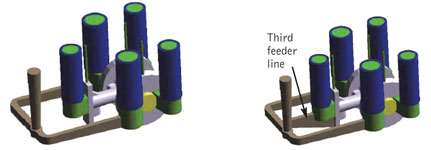
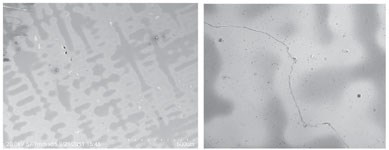
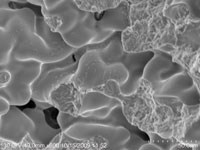
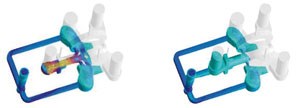
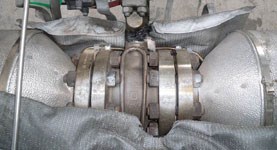

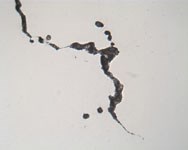






 Unloading large gate valve.jpg;maxWidth=214)